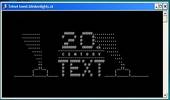While most of us are already aware of obvious keyboard shortcuts like “Alt+F4” and “Ctrl+C”, there are some obscure shortcuts which most of us tend to overlook. These keyboard shortcuts are not only useful for the average PC user but for advanced users as well. This article contains many such amazing keyboard shortcuts which if used properly could save a lot of time and effort. So let's get started.
Windows key+D: This shortcut is the keyboard equivalent of “Show the Desktop”. It is useful for quickly minimizing every open window when someone walks in and you are doing some private work.

Ctrl+Shift+Esc: This shortcut directly starts the Task Manager. While Alt+Ctrl+Del was used to bring out the Task Manager in Windows XP and earlier versions; in Windows 11, Windows 10, Windows 8.1, Windows 8 and Windows 7, it just brings up the lock this computer screen.
Ctrl+Click: This shortcut is useful for opening a link in a background tab. This is useful when you have to load a page without leaving the current one.
Alt+Print Screen: takes the screenshot of the current active window as opposed to just Print Screen which takes the screenshot of the entire screen.
Shift+Click for Yes to All and No to All: If you have a lot of dialog boxes asking yes and no question, just shift+click Yes or No on one to yes all or no all.
Ctrl+C on an error dialog box to copy its contents: Suppose your computer is giving an error message and you want to copy its contents to send to the support guy, what do you do? Just press Ctrl+C while the dialog box is highlighted and its contents will be copied to your clipboard.
Ctrl+T: This keyboard shortcut opens a new tab in internet browsers.
Ctrl+Shift+T: Reopens the last closed tab.
Ctrl+Shift+N: This shortcut opens a new incognito window in Google Chrome.
Ctrl+Shift+P: Opens a new private window in Mozilla Firefox.
Shift+Enter after typing search keywords in web browsers opens a new tab with the search results in a new window.
Ctrl+W: This shortcut closes the current tab in your browser quickly.
Ctrl+Backspace: This shortcut deletes the last word you have typed. It is useful in case you typed in a wrong word and want to delete it quickly.
Ctrl+Left or Right Arrow key: This shortcut allows you to move the cursor one word at a time instead of the default one character at a time.
Ctrl++: This shortcut allows you to zoom in web pages in web browsers. Useful when text on a web page is too small to read properly. Ctrl+Scroll wheel can also zoom in documents, file thumbnails and icons in Windows 10, Windows 8.1, Windows 8, Windows 7 and Windows Vista.
Ctrl+-: This shortcut does the reverse of the previous shortcut.
Ctrl+0: Reset the webpage's zoom.
Windows key+M: Minimizes all the open windows.
Ctrl+L: This shortcut allows you to quickly jump to the address bar of your web browser.
Windows key+Pause/Break: Quickly open the system properties dialog box.
Ctrl+Shift+Delete: This shortcut opens the option to delete your browser's history, cookies, cache and other details that it stores while you browse the internet. This shortcut is extremely useful for the privacy conscious.
Windows Key+L: This shortcut locks your computer.
Ctrl+H: makes the history appear.
CTRL+B: Bold. CTRL+U: Underline. CTRL+I: Italic. Useful for text editors and word processors.
Alt+Select: This shortcut allows you to select rectangular blocks of text in Word processors, something that is not possible with simple select.
F2: Allows you to rename the selected file.
Holding Shift while inserting a device with removable storage prevents automatic run.
Ctrl+F: This keyboard shortcut opens the Find option in any program.
Ctrl+S: If you are working on a software and want to quickly save your progress, this shortcut will come in handy.
Ctrl+Home and Ctrl+End: Useful for quickly going to the top and bottom of a page.
Ctrl+P: Useful for printing the current page.
Space Bar: While viewing a web page in a browser, pressing space bar moves the page down.
Alt+Tab: Useful for quickly cycling between running applications. Press along with Shift to cycle backwards.
Ctrl+Tab: Cycle between tabs in your browser.
Ctrl+F5: Clears the cache and refreshes the current tab.
Shift+Right click: Open alternate right click options wherever applicable. Example: Applicable on Task bar pinned items.
Alt+Double click: Open the file's properties. Alt+Enter can also be used for this.
These are some keyboard shortcuts that I found extremely useful. If you know some more useful keyboard shortcuts, do mention them in the comments.
Windows key+D: This shortcut is the keyboard equivalent of “Show the Desktop”. It is useful for quickly minimizing every open window when someone walks in and you are doing some private work.

Ctrl+Shift+Esc: This shortcut directly starts the Task Manager. While Alt+Ctrl+Del was used to bring out the Task Manager in Windows XP and earlier versions; in Windows 11, Windows 10, Windows 8.1, Windows 8 and Windows 7, it just brings up the lock this computer screen.
Ctrl+Click: This shortcut is useful for opening a link in a background tab. This is useful when you have to load a page without leaving the current one.
Alt+Print Screen: takes the screenshot of the current active window as opposed to just Print Screen which takes the screenshot of the entire screen.
Shift+Click for Yes to All and No to All: If you have a lot of dialog boxes asking yes and no question, just shift+click Yes or No on one to yes all or no all.
Ctrl+C on an error dialog box to copy its contents: Suppose your computer is giving an error message and you want to copy its contents to send to the support guy, what do you do? Just press Ctrl+C while the dialog box is highlighted and its contents will be copied to your clipboard.
Ctrl+T: This keyboard shortcut opens a new tab in internet browsers.
Ctrl+Shift+T: Reopens the last closed tab.
Ctrl+Shift+N: This shortcut opens a new incognito window in Google Chrome.
Ctrl+Shift+P: Opens a new private window in Mozilla Firefox.
Shift+Enter after typing search keywords in web browsers opens a new tab with the search results in a new window.
Ctrl+W: This shortcut closes the current tab in your browser quickly.
Ctrl+Backspace: This shortcut deletes the last word you have typed. It is useful in case you typed in a wrong word and want to delete it quickly.
Ctrl+Left or Right Arrow key: This shortcut allows you to move the cursor one word at a time instead of the default one character at a time.
Ctrl++: This shortcut allows you to zoom in web pages in web browsers. Useful when text on a web page is too small to read properly. Ctrl+Scroll wheel can also zoom in documents, file thumbnails and icons in Windows 10, Windows 8.1, Windows 8, Windows 7 and Windows Vista.
Ctrl+-: This shortcut does the reverse of the previous shortcut.
Ctrl+0: Reset the webpage's zoom.
Windows key+M: Minimizes all the open windows.
Ctrl+L: This shortcut allows you to quickly jump to the address bar of your web browser.
Windows key+Pause/Break: Quickly open the system properties dialog box.
Ctrl+Shift+Delete: This shortcut opens the option to delete your browser's history, cookies, cache and other details that it stores while you browse the internet. This shortcut is extremely useful for the privacy conscious.
Windows Key+L: This shortcut locks your computer.
Ctrl+H: makes the history appear.
CTRL+B: Bold. CTRL+U: Underline. CTRL+I: Italic. Useful for text editors and word processors.
Alt+Select: This shortcut allows you to select rectangular blocks of text in Word processors, something that is not possible with simple select.
F2: Allows you to rename the selected file.
Holding Shift while inserting a device with removable storage prevents automatic run.
Ctrl+F: This keyboard shortcut opens the Find option in any program.
Ctrl+S: If you are working on a software and want to quickly save your progress, this shortcut will come in handy.
Ctrl+Home and Ctrl+End: Useful for quickly going to the top and bottom of a page.
Ctrl+P: Useful for printing the current page.
Space Bar: While viewing a web page in a browser, pressing space bar moves the page down.
Alt+Tab: Useful for quickly cycling between running applications. Press along with Shift to cycle backwards.
Ctrl+Tab: Cycle between tabs in your browser.
Ctrl+F5: Clears the cache and refreshes the current tab.
Shift+Right click: Open alternate right click options wherever applicable. Example: Applicable on Task bar pinned items.
Alt+Double click: Open the file's properties. Alt+Enter can also be used for this.
These are some keyboard shortcuts that I found extremely useful. If you know some more useful keyboard shortcuts, do mention them in the comments.

 About
About




Reader Comments
Really superb tips. Thanks.
Besides Ctrl+L: to quickly jump to the address bar of your web browser. F6 quickly jumps to the address bar of your web browser. F4 quickly jumps to the address bar and allows you to select from your recent history of your web browser.
Very interesting shortcuts, few of those are known but not used regularly. After reading your blog post, I used 3-4 shortcuts and am really excited. Good work man.
Many of these are known to me, but few are new and quite interesting. Like "Shift+Enter inserts .net domain name extension"
Windows key + Tab : different way to cycle through active windows
Ctrl + 1, 2, 3...for switching between different tabs accordingly.
Ctrl + Shift + Arrow keys selects and highlights content , in case you need to delete or choose the contents faster..
Ctrl + Shift + Home or Ctrl + Shift + End -> Selects the Entire line.
windows key + E ,opens computer
Click the scroll button within the tab area to close a browser tab, same as clicking (x)
Double click the address on a browser to highlight a word within the link
Triple click the address on a browser to highlight the entire link
F1 opens Windows Help menu.
Windows key + Up Arrow key: maximize application window
Windows key + Down Arrow key: restore application window
Windows key + Down Arrow key again (when the application window is not maximized): minimize application window
Windows key + Left Arrow key: move the application window to the next screen monitor on the left (or if it's already at the far left monitor, then moves the application window to the far right monitor)
Windows key + Right Arrow key: move the application window to the next screen monitor on the right (or if it's already at the far right monitor, then moves the application window to the far left monitor
Ctrl + Up or Down arrow keys quickly brings you to the beginning or end of a paragraph.
If you accidentally press Spacebar and the page goes down, then you can press Shift+Spacebar to scroll the page back up..
Windows key plus < key and your tabs will momentarily disappear.
(These are obvious tricks you probably already know.)
ctrl+Z means undo
crtl+C means copy
crtl+V means paste
If you're playing a game H is for hint in the windows programs I use.
Alt + F4 closes current window. Asks to save or not before closing window if not saved previously
ctrl+tab moves to next tab
ctrl+shift+tab previous tab
Post a Comment
Make your opinion count by posting a comment.